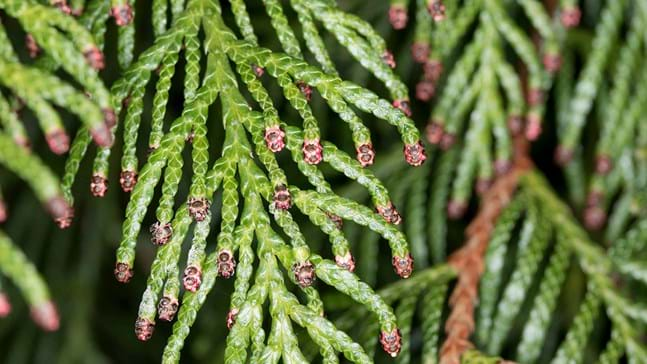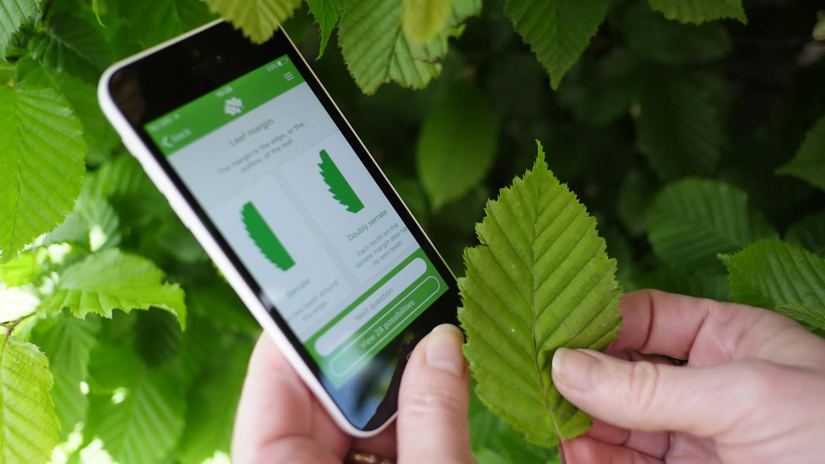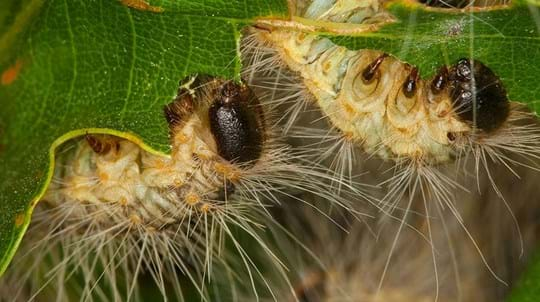
Credit: D Mark / Alamy Stock Photo
Leaves
Leaf bases cover the twigs, creating flattened sprays of foliage in opposite pairs. Leaves sprouting from the twigs are small, only 2–3mm long, and scale-like with an ovate shape. They are dark glossy green above with whitish markings underneath.














